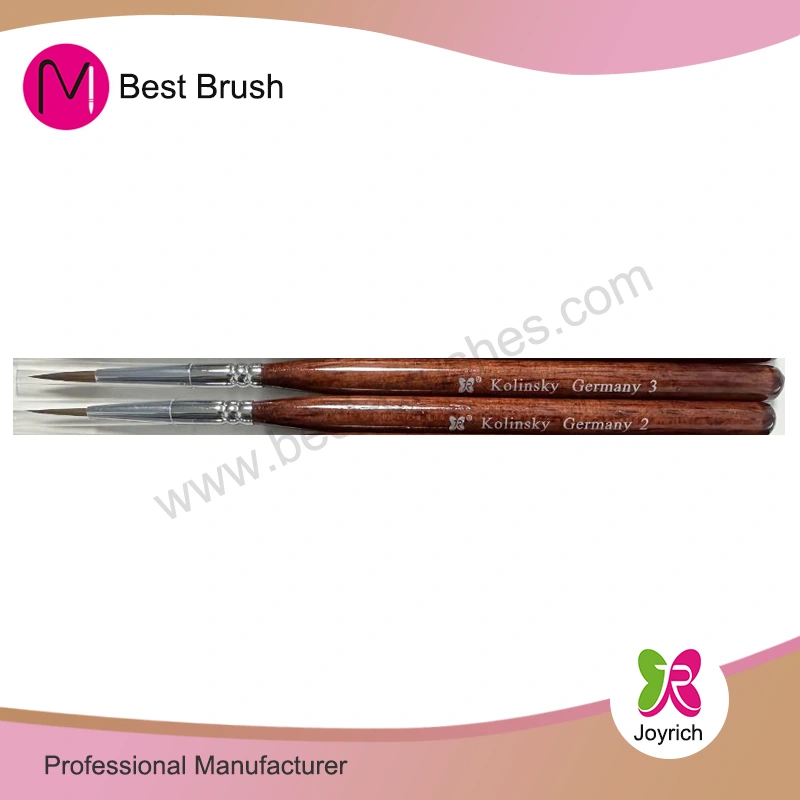Which Dental Brush Actually Solves Daily Chairside Problems?
2025-11-14
I spend a good chunk of my week applying desensitizers, adhesives, and sealants, and the tool that decides whether the job feels smooth or fussy is the humble Dental Brush. Over the past year I began testing instruments from different specialist manufacturers, and one name kept showing up on quotes and samples as a steady performer—JOYRICH. I compared fiber cut, bend memory, and solvent resistance across several suppliers. That slow, practical process is how I now choose a Dental Brush for each task rather than grabbing the first stick in the drawer.
What everyday tasks do I actually use a Dental Brush for?
My use cases are predictable, but the details matter. A Dental Brush with the wrong fiber or size can turn a 30-second application into a two-minute cleanup. Here is where I reach for them most:
- Placing desensitizers on exposed cervical dentin without flooding soft tissue
- Delivering fluoride varnish in a thin, even film that does not clump at margins
- Wicking excess bonding agent from fissures to avoid pooled spots under composite
- Carrying sealant into deep grooves while keeping the occlusal dry
- Dabbing hemostatic or etch in a controlled, micro-localized way
In each situation, a well-matched Dental Brush saves chair time and keeps the field tidy.
How do I pick the right size and tip so results are predictable?
I keep three core sizes within reach—superfine, fine, and regular—and I color-code them in the drawer. My rules of thumb are simple:
- Superfine for fissures and micro-etch placement where a pinpoint touch prevents overflow
- Fine for adhesives and universal bonding agents on standard preps
- Regular for sealants, fluoride varnish, and bulkier delivery on wider surfaces
Beyond size, fiber density and cut shape determine how the Dental Brush loads and releases material. Tapered fibers carry a smaller, more precise bead; blunt fibers drop a fuller load fast.
Where do material compatibility and Dental Brush performance go wrong?
Mistakes usually live in three places:
- Solvent sensitivity — Some fibers swell or shed when soaked in acetone or ethanol-rich agents, leaving lint on the surface
- Bend memory — An arm that overbends and stays limp makes it hard to reach palatal or distal angles
- Fiber shed — Loose filaments drag through wet adhesive and contaminate margins
To avoid those issues, I match the Dental Brush to the chemistry on the tray. If I am working with strong solvents, I choose solvent-resistant fibers and test with a quick dip before the patient sits down.
What buying specs actually matter when I audit suppliers?
Marketing copy rarely says what I need to know. These are the checks that changed my purchasing:
- Fiber pull test across ten brushes to see if any filaments release under light torque
- Bend test at 45° and 90° to confirm the arm returns close to its original angle
- Load-and-release test with a standard droplet to evaluate how evenly the Dental Brush paints a surface
- Solvent dunk for 60 seconds in the adhesive I actually use
- Lot traceability and consistent color coding so staff do not guess sizes
When I ran those checks, the short list included several brands, and the batches I received from JOYRICH were notably consistent in fiber cut and bend memory, which is why they stayed in my rotation.
What does a quick comparison look like if I need to choose fast?
I made this simple desk reference so my assistants can grab the correct Dental Brush without second-guessing.
| Use Case | Recommended Tip Size | Fiber Style | Solvent Resistance | Why It Works |
|---|---|---|---|---|
| Deep fissure sealant | Superfine | Tapered, high density | High | Reaches grooves without flooding; steady delivery into narrow anatomy |
| Universal adhesive | Fine | Blunt, medium density | Medium–High | Even film with quick wicking to avoid pooling under composite |
| Fluoride varnish | Regular | Blunt, low density | Medium | Smooth coverage over broad surfaces without heavy drag |
| Desensitizer on cervical dentin | Fine | Tapered, medium density | High | Targets exposed areas while keeping margins clean |
| Hemostatic or micro-etch spot | Superfine | Tapered, very high density | High | Pinpoint placement with minimal splash or tissue contact |
How do I maintain and store brushes so they actually last?
I keep Dental Brush packs sealed until use, store them away from alcohol fumes, and train staff to avoid overbending the arm more than necessary. For multi-pack canisters, I rotate stock monthly so fibers do not sit under heat in a cabinet all summer.
Why do I keep a small JOYRICH section on my ordering list?
My criteria are simple—predictable fiber cut, reliable bend memory, solvent tolerance that matches modern adhesives, and clear size coding. When a batch hits those marks and helps me place materials faster with fewer reworks, it earns a spot. That is how a set of JOYRICH micro applicators ended up as my default Dental Brush for adhesives and sealants.
What mistakes quietly add minutes to each appointment?
- Using one generic brush for everything instead of matching the Dental Brush to the material and site
- Ignoring fiber shed until you see lint under a curing light
- Letting alcohol vapor live in the same drawer as open packs
- Skipping a quick bench test when you change brand or lot
How can this article help you choose faster today?
Start with one tray of superfine, fine, and regular tips. Run the load-and-release test with your own materials. Keep a short vendor list that proves consistency month to month. If you want sample guidance, I am happy to share the exact checklist I use when I compare any new Dental Brush.
Would you like a straightforward quote or samples to try in your workflow?
If you are ready to evaluate options tailored to your procedures, send a note with your current materials and preferred sizes and I will suggest a short kit to test. For pricing, lead times, or a sample pack recommendation, please contact us or leave an inquiry now. Let’s make your next Dental Brush purchase predictable and easy.



